![]()
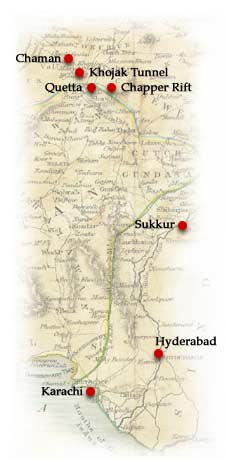 Fred Bremner was not born or raised in Pakistan. In fact during his life time there was no country on the map by the name of Pakistan. Yet, for thirty five years he lived and worked among, owned studios and properties at, and traveled through out the areas that would later become Pakistan.
Fred Bremner was not born or raised in Pakistan. In fact during his life time there was no country on the map by the name of Pakistan. Yet, for thirty five years he lived and worked among, owned studios and properties at, and traveled through out the areas that would later become Pakistan.
He was a commercial photographer who like thousands of other enterprising Britons earned his living by working his trade. But he was one of the pioneers of his art working in Karachi, Quetta, Rawalpindi and Lahore, the four important and major cities of Pakistan today.
He was not a diplomat, historian or a journalist, yet his photographs and publications have become an important source of historic records of the cities, events, places and people in Pakistan. By helping record the history of the late nineteenth and early twentieth century he, however unintentional it may, has rendered important services to what would later become Pakistan.
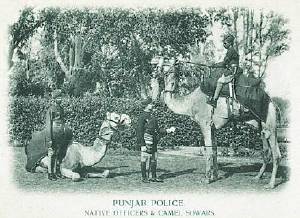 Yet, in Pakistan there is no mention of his name in history books; no acknowledgement of his work in museums; no art gallery dedicated to him; not even a plaque of his name at his former studios some of which are still in operation. No stamp has ever been issued in his name; no articles are written on him; no seminar has been offered to discuss his work and his contributions in the art of photography in Pakistan. In fact, Pakistan is totally oblivious of him.
Yet, in Pakistan there is no mention of his name in history books; no acknowledgement of his work in museums; no art gallery dedicated to him; not even a plaque of his name at his former studios some of which are still in operation. No stamp has ever been issued in his name; no articles are written on him; no seminar has been offered to discuss his work and his contributions in the art of photography in Pakistan. In fact, Pakistan is totally oblivious of him.
It is time that Pakistan acknowledges his art and services and claims him as one of her own and gives him his rightful place in heritage of Pakistan.
Fred Bremner was born in 1863 in a small village of Scotland named Aberchinder, also known as ‘Foggylone’. In 1876 at the age of thirteen he left school and start working with his father who was a professional photographer and owned a studio in the town of Banff, Scotland. In 1882 after having worked for his father for six years he accepted a contract from his brother-in-law, G.W. Lawrie who by that time had owned a studio in Lacknow. So with twenty pounds in his pocket borrowed from his father and passage provided by Lawrie he set sails on a ship named Sutlej to the British Indian Empire. After landing at Bombay he traveled for two days and two nights to reach Lacknow. For the next two years he would work on several assignments at various locations in northern India.
 After the first two years, for his next assignment he was sent 1500 miles away to work in Karachi where he arrived via Lahore in summer of 1885. British had captured Karachi in 1839 when it had a population of only ten thousand. However at the time of his arrival Karachi had become an important sea port for overseas commerce for Sindh, Balochistan and Punjab provinces and its population had increased to hundred fifty thousand.
After the first two years, for his next assignment he was sent 1500 miles away to work in Karachi where he arrived via Lahore in summer of 1885. British had captured Karachi in 1839 when it had a population of only ten thousand. However at the time of his arrival Karachi had become an important sea port for overseas commerce for Sindh, Balochistan and Punjab provinces and its population had increased to hundred fifty thousand.
Even though prior to his arrival he did not know a soul in Karachi, he was soon able to meet a Barrack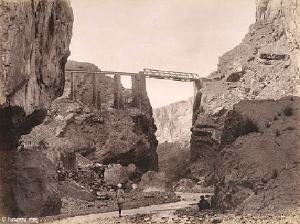 Master Richardson who belonged to the Scottish Lodge of Freemasons, the organization Bremner had joined earlier. Richardson took him as a paying guest and also introduced him to a chemist friend who allowed the young photographer to set up his studio tent in his yard. Bremner worked in this set up for next five months. During this time he also hired two local assistants who helped him with retouching, printing, finishing and hand coloring. At the end of his assignment he left Karachi in 1886 and did not return to the city for the next two years. In April 1888 his contract with Lawrie had ended, his sister had died and he wanted to go home. So he returned to Karachi to take a ship for the British Isles.
Master Richardson who belonged to the Scottish Lodge of Freemasons, the organization Bremner had joined earlier. Richardson took him as a paying guest and also introduced him to a chemist friend who allowed the young photographer to set up his studio tent in his yard. Bremner worked in this set up for next five months. During this time he also hired two local assistants who helped him with retouching, printing, finishing and hand coloring. At the end of his assignment he left Karachi in 1886 and did not return to the city for the next two years. In April 1888 his contract with Lawrie had ended, his sister had died and he wanted to go home. So he returned to Karachi to take a ship for the British Isles.
In 1889 Bremner returned to Karachi to set up his own business. Through his savings he had bought some equipment from Glasgow and paid for the fair for himself and his one assistant whom he also had brought to Karachi with him. However after paying for all that, he had very little money left to sustain. Luckily a new market had just been inaugurated in Karachi and there were enough townsmen to be photographed to mark the occasion.
Another help came when the Sukher bridge, named after Viceroy Lord Lansdowne across the Indus river was inaugurated on March 25, 1889 by Lord Reay, Governor of the Bombay Province with which Sindh was attached at that time. Bremner had traveled to Hyderabad and then to Sukher to take remarka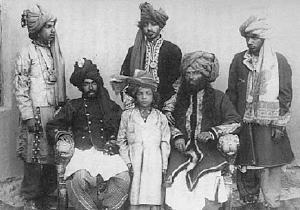 ble photographs of this new magnificent structure. Sensing limited opportunities in Karachi, Bremner decided to explore work possibilities in Quetta which after being captured in 1876 by Lord Robert Sandeman was made capital of Balochistan and by 1889 had become a hub of significant military and political activities.
ble photographs of this new magnificent structure. Sensing limited opportunities in Karachi, Bremner decided to explore work possibilities in Quetta which after being captured in 1876 by Lord Robert Sandeman was made capital of Balochistan and by 1889 had become a hub of significant military and political activities.
Journey to Quetta took Bremner through Jacobabad where he was able to pick up more business taking pictures of Cavalry and Infantry men stationed there. While in Quetta he was called upon to photograph the Viceroy who was on a visit there at the invitation of Governor Balochistan, Sir Robert Sandeman. The Khan of Kalat was also invited for the occasion and he too along with male 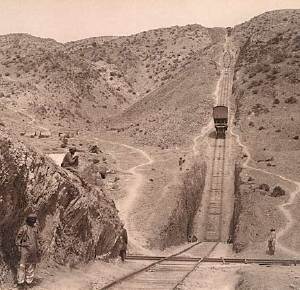 members of his entourage was photographed by Bremner. In Balochistan, Bremner also photographed the Bolan Pass, traveled to border town of Chaman and took pictures of the under construction Khojak or Koh Zak Tunnel near Shelabagh.
members of his entourage was photographed by Bremner. In Balochistan, Bremner also photographed the Bolan Pass, traveled to border town of Chaman and took pictures of the under construction Khojak or Koh Zak Tunnel near Shelabagh.
In 1892 Bremner closed his Karachi studio and moved to Rawalpindi where he would work in the winter months. The city had become a major garrison town and there was plenty of work taking pictures of military officers and listed men alike. One of his note able subjects was Lord Roberts, Commander-in-Chief of the British Army in India. Around 1895 Bremner was making an album titled ‘Types of the Indian Army’ while based in Rawalpindi. This album had sixty pictures showing men of various ethnicities, races and ranks in groups of four or five together. However in order to complete his project, he had to close his shop one more time and travel back to England.
Upon his return from England Bremner decided to settle in Quetta. In 1900 from Quetta 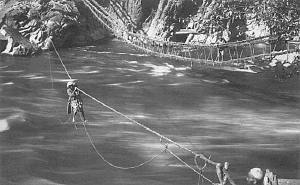 he issued an album of 45 photographs titled ‘Balochistan Illustrated’ featuring people and landscape of that province. While in Quetta he was detected for having heart problems and was advised to return to England but he instead decided to visit Kashmir for few months. He traveled from Quetta to Rawalpindi and then left for Srinagar on a two horse Tonga, crossed river Jhelum by a rope bridge and visited the temples of Murtand on the way. His three months trip to Kashmir allowed him to capture the beauty of the mountain state where he took some of the memorable photos of her people, lakes and mountains alike. Bremner stayed in Quetta for two years and then decided to move again.
he issued an album of 45 photographs titled ‘Balochistan Illustrated’ featuring people and landscape of that province. While in Quetta he was detected for having heart problems and was advised to return to England but he instead decided to visit Kashmir for few months. He traveled from Quetta to Rawalpindi and then left for Srinagar on a two horse Tonga, crossed river Jhelum by a rope bridge and visited the temples of Murtand on the way. His three months trip to Kashmir allowed him to capture the beauty of the mountain state where he took some of the memorable photos of her people, lakes and mountains alike. Bremner stayed in Quetta for two years and then decided to move again.
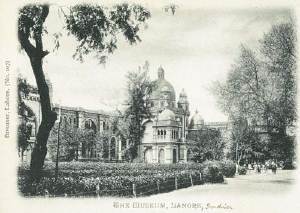 This time he moved permanently to Lahore even though he kept his place in Quetta as his summer residence. Lahore as capital of Punjab under British had grown to its Civil and Military prominence. Bremner had got married by now and set up his house and studio in a building opposite to the Roman Catholic Cathedral. From here in 1902 he traveled to Delhi to photograph the pomp and show organized by the Viceroy Lord Curzon to impress the Nawabs and Maharajas he had successfully subjugated earlier.
This time he moved permanently to Lahore even though he kept his place in Quetta as his summer residence. Lahore as capital of Punjab under British had grown to its Civil and Military prominence. Bremner had got married by now and set up his house and studio in a building opposite to the Roman Catholic Cathedral. From here in 1902 he traveled to Delhi to photograph the pomp and show organized by the Viceroy Lord Curzon to impress the Nawabs and Maharajas he had successfully subjugated earlier.
In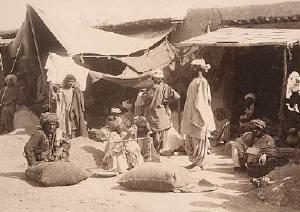 1910 Bremner sold his summer house and business in Quetta in favor of Shimla where he had the opportunity to photograph Lady Eileen Elliot, daughter of Viceroy Lord Minto as well as Viceroy Lord Reading. He had also photographed Lord Hardinge, Lord Chelmsford, Lord Kitchener and Sir Michael O’Dwyer, Governor of Punjab. In 1922 he photographed then Prince of Wales who later became King Edward the VIII. Finally in 1923 he sold his places in both Lahore and Shimla and returned to Elgin, England where he finally published his memoir in 1940. His exact date of death is not known but most likely he died in 1941 and was survived by a son.
1910 Bremner sold his summer house and business in Quetta in favor of Shimla where he had the opportunity to photograph Lady Eileen Elliot, daughter of Viceroy Lord Minto as well as Viceroy Lord Reading. He had also photographed Lord Hardinge, Lord Chelmsford, Lord Kitchener and Sir Michael O’Dwyer, Governor of Punjab. In 1922 he photographed then Prince of Wales who later became King Edward the VIII. Finally in 1923 he sold his places in both Lahore and Shimla and returned to Elgin, England where he finally published his memoir in 1940. His exact date of death is not known but most likely he died in 1941 and was survived by a son.
Acknowledgement: The factual information in this essay is taken from a larger essay “Bremner’s Indian Years” by Brij Bhushan Sharma. The photographs here are linked from, and more are avilable at Harappa.com. We are thankful to Harappa.com for so elegantly preserving this heritage. Click on pictures to get details on the picture.
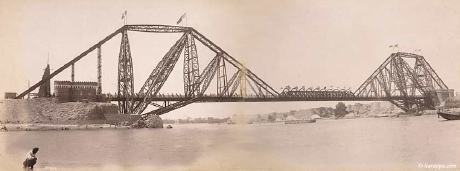
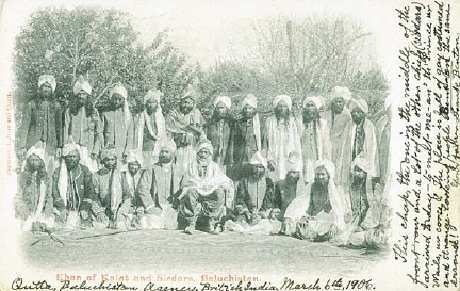



















































Excellent post, real good effort. welldone.
A gem of a post. Thanks for sharing this.